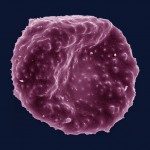Link to Pubmed [PMID] – 26868597
Link to DOI – 10.1093/gbe/evw019
Genome Biol Evol 2016 Feb; 8(3): 665-80
Reef-building corals depend on symbiotic mutualisms with photosynthetic dinoflagellates in the genus Symbiodinium. This large microalgal group comprises many highly divergent lineages (“Clades A-I”) and hundreds of undescribed species. Given their ecological importance, efforts have turned to genomic approaches to characterize the functional ecology of Symbiodinium. To date, investigators have only compared gene expression between representatives from separate clades-the equivalent of contrasting genera or families in other dinoflagellate groups-making it impossible to distinguish between clade-level and species-level functional differences. Here, we examined the transcriptomes of four species within one Symbiodinium clade (Clade B) at ∼20,000 orthologous genes, as well as multiple isoclonal cell lines within species (i.e., cultured strains). These species span two major adaptive radiations within Clade B, each encompassing both host-specialized and ecologically cryptic taxa. Species-specific expression differences were consistently enriched for photosynthesis-related genes, likely reflecting selection pressures driving niche diversification. Transcriptional variation among strains involved fatty acid metabolism and biosynthesis pathways. Such differences among individuals are potentially a major source of physiological variation, contributing to the functional diversity of coral holobionts composed of unique host-symbiont genotype pairings. Our findings expand the genomic resources available for this important symbiont group and emphasize the power of comparative transcriptomics as a method for studying speciation processes and interindividual variation in nonmodel organisms.


